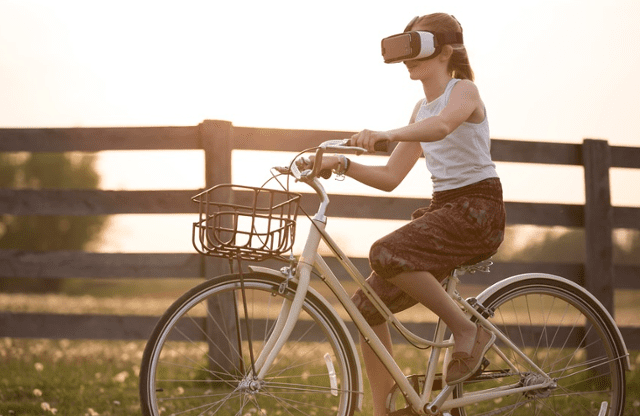Virtual reality is an idea that humans have dreamed about, thought about and weighed the possibilities of for almost a century now. Writers as early as the 1950s considered what it would be like for humans to transcend into the virtual world, and now, courtesy of companies like Oculus and Sony, that vision is a reality.
Indeed, VR tech has come a long way in a relatively short time, but now that the prospect of experiencing a virtual world is realistic, consumers are asking “what’s next?” To answer that, one first has to look at the world of home entertainment.
The Gaming World’s Big Bet
As the mobile gaming market continues to explode courtesy of smartphones and innovative devices like Nintendo’s 3DS, traditional non-mobile, home console providers like Microsoft (via the Xbox One) and Sony (courtesy of the PlayStation 4) are looking at innovative ways to keep gamers sitting on their couches instead of gaming on the go. As such, brands in the home entertainment space are stumbling over themselves to get a ready-made VR platform that is compatible with home consoles and PC gaming systems to the market.
So far, two IPs have emerged that could very well change the game (yes, that was a pun). Sony’s in-house PlayStationVR headset is hitting the market in October and will have the power to immerse players in a 360-degree virtual reality experience in select PlayStation 4 games. The PlayStationVR is expected to be the first VR headset with mass consumer appeal, and analysts, while unsure of the demand the product will generate, are projecting that it will be VR’s best bet at mass adoption in the gaming space. Sony’s big bet follows on the heels of the Oculus Rift, a Mark Zuckerberg-backed project which was released last year as the world’s first true high-definition VR headset compatible with PCs and Xbox Ones.
With VR now hitting the mass market in the form of video games, it is possible that the platforms success in the console space could be the spark needed to push VR into mainstream relevance. If VR providers like Oculus see success in home entertainment, it could provide them with the capital necessary to push the platform into less consumer-friendly spaces like education, healthcare and even social media.
In essence, we are already beginning to see the applications of VR expand into practical spaces. Your children could don VR-enabled headsets that allow them to not only learn about ancient civilizations, but actually witness such civilizations themselves! Google’s Pioneer Expeditions program allows students to do just that and could represent a seismic shift in how children learn in the future.

A Life Lived Virtually
Of course, the integration won’t stop there. As VR continues to gain momentum, folks like Zuckerberg intend to make virtual reality completely integrated into our real life social world. Through Facebook’s acquisition of Oculus, Zuckerberg and Co. intend to one day integrate Facebook and other social platforms into your daily life via virtual reality. Facebook envisions a world where you and your friends can connect with each other in pseudo-physical fashion in the virtual realm, regardless of each friend’s location in real-time. The realm would allow friends to chat, play games and much more, just as you would in real life…only your friends would be made of pixels instead of atoms. Indeed, we could soon be facing a world where our time is spent in the virtual world more than the physical. Perhaps our science fiction forefathers were right after all!
Tying it back to the Biz
For the PR or digital marketing practitioners, you’re probably thinking to yourself, “how does this affect my business?” And the answer to that question may surprise you.
As it turns out, VR has the power to revolutionize the way that brands promote and market their products. Two weeks ago, I spoke at length about how experiential marketing is the golden key for brands looking to engage with millennials. Virtual reality is the next step in this evolution, as it is a purely experiential platform.
The NBA’s Golden State Warriors have already begun dipping their toes into VR-marketing, and the team already has an incredible success story resulting from the platform’s usage. The Warriors, who earlier this summer were on a mission to sign superstar small forward Kevin Durant, used virtual reality goggles to give Durant a fully immersive look at what his career would look like as a Warrior, showcasing shots of the Golden Gate bridge, video from team practices, and much more.
The experience was so impactful that the Warriors claimed it was a key reason that they were eventually able to sign Durant to the team. Just imagine what kinds of possibilities could open up once all companies start experimenting with such VR marketing tactics. It could fundamentally change the way brands engage with consumers forever.
A Paradigm Shift for the Ages
All told, the prospect of a VR-enabled world may seem like science-fiction now, but soon enough, your life and the brands you engage with could very well be experienced virtually, at least if folks like the Golden State Warriors and Mark Zuckerberg have any say in the matter. So prepare to get pixelated!


